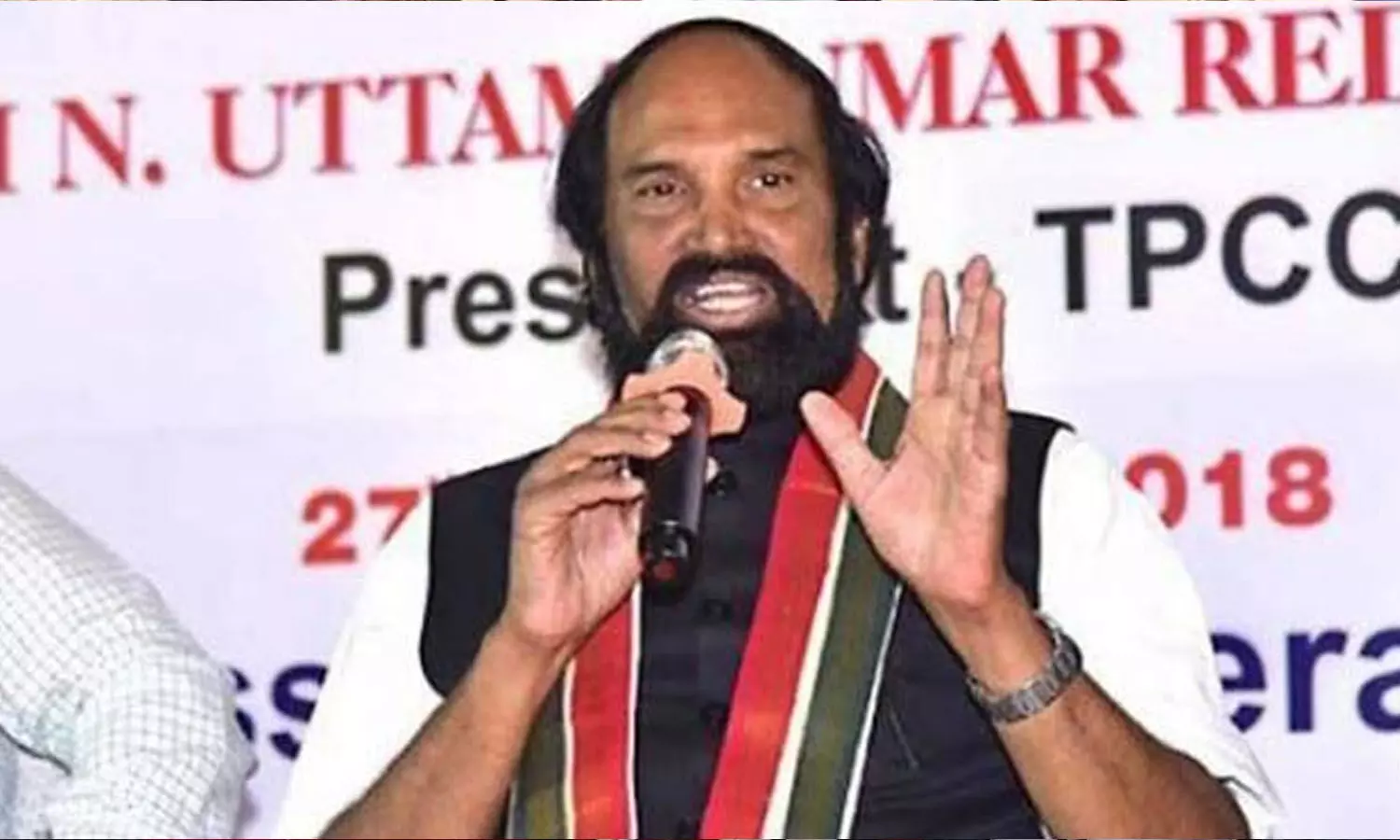Centre’s data proves demonetisation a failure, says Congress MP Uttam Kumar Reddy
Uttam Kumar Reddy said that demonetisation failed to achieve its objectives of curbing black money, eliminating counterfeit currency, and promoting digital payments

HYDERABAD: The BJP government has finally admitted that it failed to meet all of the demonetisation objectives that it enacted in November 2016, according to Congress MP Capt N. Uttam Kumar Reddy.
Responding to the written reply given by Union Minister Nirmala Sitharaman to a question raised by him during the Question Hour in the Lok Sabha on Monday, Uttam Kumar Reddy said that the statistics pertaining to Currency in Circulation (CiC) and the value of Notes in Circulation (NiC) provided by the Finance Minister clearly shows that none of the objectives of demonetisation was achieved by the Modi Govt.
The Finance Minister, in her written reply, said that the mission of the government was to move towards a less cash economy to reduce the generation and circulation of black money and to promote the digital economy. The objectives of withdrawal of legal tender character of specified bank notes (Rs. 1,000 & Rs. 500), as stated in the Gazette notification S.O. 3407 (E) dated November 08, 2016, issued by the Government of India, was to contain the rising incidence of fake currency notes which were largely in circulation; to limit the usage of high denomination banknotes for storage of unaccounted wealth and to contain the rising level of using the fake currency for financing subversive activities like drug trafficking and terrorism.
However, Uttam Kumar Reddy said that the data clearly shows that the Currency in Circulation (CiC) and the value of Notes in Circulation (NiC) almost doubled post-demonetisation. While the CiC) in March 2016 was Rs. 16,63,300 crores; it stood at Rs. 31,33,691 crores in March 2022. The reduction in CiC was visible only for a year when it decreased to Rs. 13,35,200 crores in March 2017. But it went on increasing every year. It jumped to Rs. 18,29,318 Cr in 2018; Rs. 21,36,736 Cr in 2019; Rs. 24,47,280 Cr in 2020; Rs. 28,53,733 Cr in 2021 and Rs. 31,33,691 in March 2022.
"Demonetization was supposed to reduce black money by reducing cash in circulation. However, after the demonetisation the cash in circulation has continued to rapidly grow. Even relative to the size of the economy, i.e. the ratio of cash to GDP has grown from 8.7% in March 2017 to 13.7% in March 2022.
Similarly, as per the data furnished by the Finance Minister in the Lok Sabha today, the volume and value of Notes in Circulation have increased significantly post-demonetisation. The volume and value of NiC in March 2016 were 902,660 lakhs and Rs. 16,41,500 crore respectively. It increased to 13,05,326 and Rs. 31,05,721 in March 2022.
"What was the impact of demonetization after it caused immense suffering to almost all citizens of the country? It was supposed to handle black money by reducing cash in circulation, but clearly, the cash has not been reduced. Secondly, the growth of Digital Payment systems in India has been advertised as a massive success, however, the data suggest that the use of cash continues to only grow," he said.
Uttam Kumar Reddy said that Prime Minister Narendra Modi claimed that demonetisation was aimed to curb the circulation of black money, which is generated through illegal means such as corruption, tax evasion, and money laundering. However, the move did not result in the detection of a significant amount of black money. According to the Reserve Bank of India (RBI), around 99.3% of the banned currency notes were deposited back into the banking system, which means that the holders of black money were able to convert their old notes into new ones. The government's efforts to track down black money holders through various measures such as the Income Declaration Scheme and the Benami Transactions Act were also not very successful, he said.
"Is it true that the majority of black money has always been held in gold and real estate, and it continues to be held that way while the government chose to target only cash which primarily harmed salaried class and small businesses which rely on cash?" he asked.
After falling in 2020-21, counterfeit notes recorded a 10.7% uptick in 2021-22, with the Rs 500 denomination fake notes rising by 102 per cent. Fake notes of Rs 2,000 increased by 55% in 2021-22 over the previous fiscal year, as per RBI's Annual Report of 2021-22. What are the steps the government has taken to counter fake currency? he asked.
Uttam Kumar Reddy said that demonetisation failed to achieve its objectives of curbing black money, eliminating counterfeit currency, and promoting digital payments. It led to an economic slowdown, which resulted in job losses and reduced consumer spending. The cash crunch led to a decline in consumer spending, which affected several sectors such as retail, real estate, and hospitality. The informal sector, which relies heavily on cash transactions, was hit the hardest. The move also led to job losses, especially in the small and medium enterprises (SMEs) sector, which was already struggling due to the implementation of the Goods and Services Tax (GST) a few months earlier, he said.
The Congress MP said that the data provided by the Finance Minister today has proved that the demonetisation was an ill-conceived and poorly executed move which had severe economic consequences. He demanded that PM Modi apologises to the nation for causing hardship to the common man while executing a disastrous plan.



